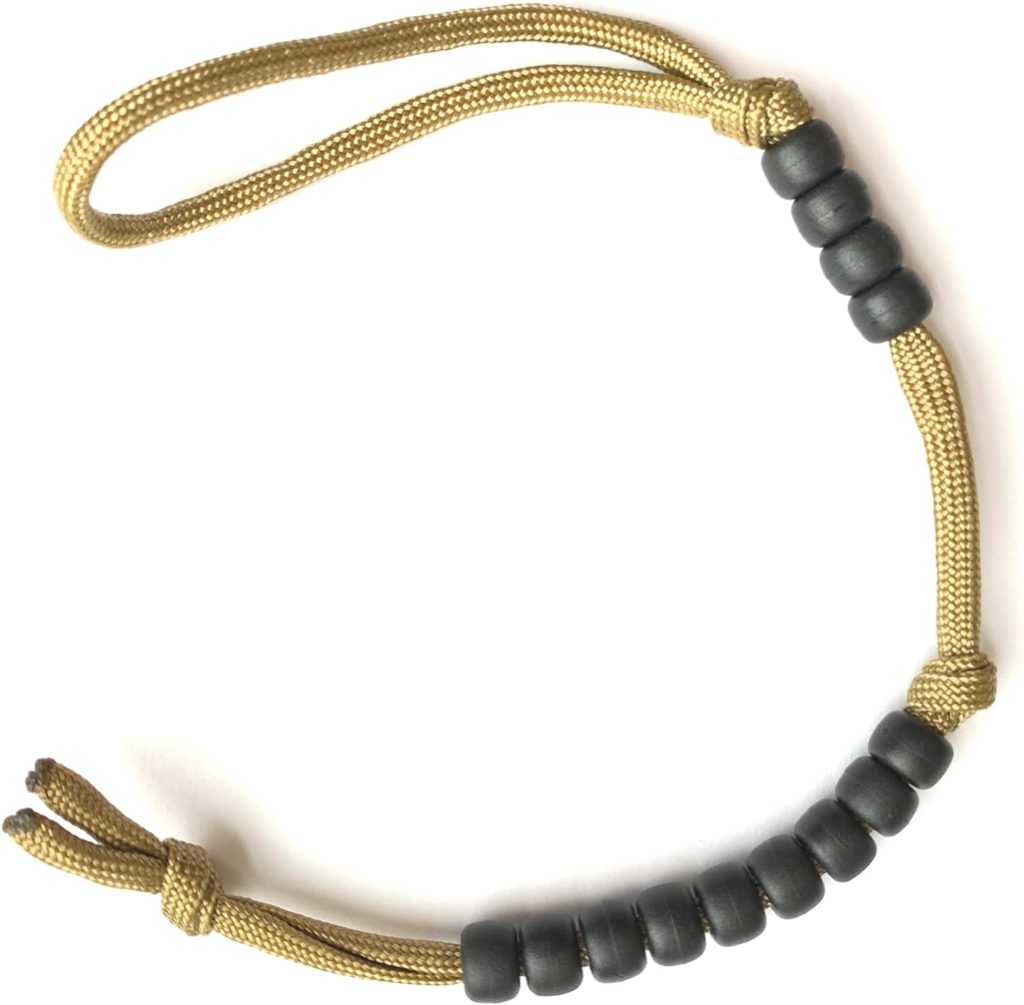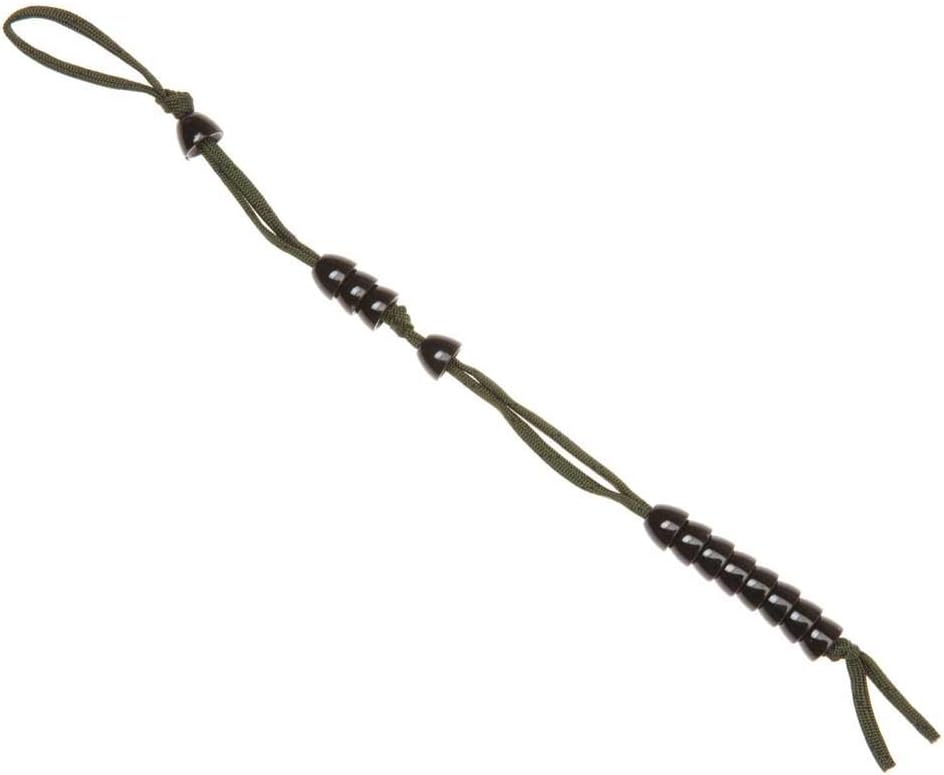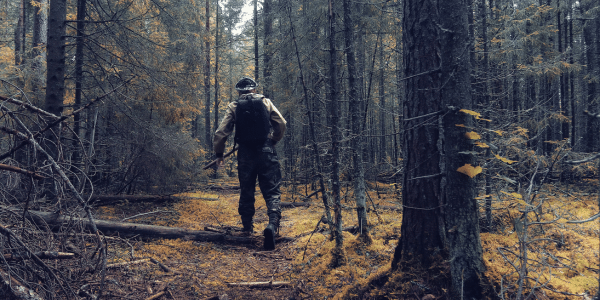Precision In Motion: Using Pacing Beads for Land Navigation
Whether you’re a seasoned outdoors enthusiast or new to the wild, mastering land navigation is crucial for your adventures. It’s easy to feel lost when trying to keep track of distance covered on foot through varied and challenging terrain. But what if there was a tool that could elevate your navigation skills, ensuring precision with every step? There is with something called pacing beads (or Ranger beads).
Pacing beads, an ingeniously simple method employed by military experts worldwide. These small but mighty counters offer a way to measure how far you’ve walked without relying on electronics or complex equipment.
By learning this technique, navigating any landscape can become intuitive and precise.
Our guide will walk you through everything from understanding what pacing beads are to using them effectively in the field, enhancing your navigational understanding regardless of where your journey takes you.

Ready for pinpoint accuracy in your treks? Let’s explore this essential skill together!
Key Takeaways
- Pacing beads, also known as ranger beads, are a valuable navigation tool as these beads are used to help keep track of the distance traveled by sliding beads on a cord after counting paces.
- They consist of 13 beads divided into two sections and can measure distances within 10% accuracy, supporting precise land navigation without electronic devices.
- To use pacing beads efficiently, determine your individual pace count for 100 meters and slide the appropriate number of beads for each set interval walked.
- These manual counters work in all types of terrain and weather conditions, making them reliable for hikers, military personnel, survivalists, and outdoor enthusiasts.
- Customizable pacing bead options allow users to choose from various colors and sizes to match personal preference or environmental needs.
Table of contents
What are Pacing Beads?
Pacing beads can be used as a manual counting tool, used to keep track of distance traveled through a pace count. They consist of a length of cord with 13 beads, usually divided into two sections and separated by a knot.
Used in Military Land Navigation
Pacing beads, or ranger beads, are a simple yet effective manual counting tool for land navigation. They consist of 13 beads on a length of paracord, divided into two sections by knots.
Related Article: The History of Military Camo Patterns
The top section has four beads and the bottom has nine. Each bead represents a set distance traveled; typically, one bead is slid down after every 100 meters walked.
To keep an accurate record of distance covered, you move one bead from the upper to lower section every time you complete ten sets of 100 meters (or 1 kilometer). This system allows hikers, preppers, survivalists, and military personnel alike to track their progress without relying on electronic devices.
Made durable with materials like plastic or wooden beads strung on paracord, they withstand various weather conditions and terrain challenges encountered in the wild or during tactical maneuvers.
Usage of Pace Counter Beads
To keep track of how far you’ve walked, slide one bead down for every ten paces counted. This system is simple: once all nine beads in the lower section are pulled tight against the knot, you’ve gone approximately 100 meters based on your average pace count.
For longer distances, use the upper beads to mark each set of 900 meters traveled — just slide one of these four beads down after moving all nine lower beads back up. It’s a reliable way to measure distance without constantly looking at a GPS or map.
Counting accurately with pace counter beads can dramatically improve land navigation skills for preppers and survivalists who thrive on precision and self-reliance. Since accuracy is key, it’s essential to know the length of your stride to adapt the pace count according to different terrains or conditions.
Related Article: Survival Blanket — Essential Survival Gear for Emergency Warmth
Using ranger beads helps maintain a clear focus during navigation, eliminating the need for mental tallies or guesswork while traversing unfamiliar landscapes — critical when precision matters most.
Counting paces
Understanding how to count your paces with precision is a crucial skill for land navigation. Here’s a step-by-step guide to using pace count beads for accurately measuring the distance you’ve walked.
- Start by determining your individual pace count: Measure out 100 meters and walk this distance how you normally would, counting every time your right foot hits the ground. The total number of steps taken is your pace count for 100 meters.
- Attach the pace beads securely to your gear or around your neck for easy access while on the move.
- Begin your journey with all beads at the top of the cord; these beads represent hundreds and tens of paces.
- For each set of ten paces walked, slide one bead down toward the knot in the paracord. This action helps keep track without losing concentration on your surroundings.
- Reach ten sliding movements? Time to move one of the lower section beads up against the knot, signifying 100 paces completed.
- Reset top section beads by sliding them back up away from the knot once you’ve moved a lower bead. This signals that you’ve started counting toward another hundred paces.
- Continue this process: Slide top beads for tens of paces, adjust lower beads after each hundred paces, and return upper section beads to their starting position when necessary.
- Maintain consistency by sliding beads with each set interval — whether that’s every ten or a hundred paces — so that it becomes second nature.
- Use ranger beads together with a compass lanyard or alongside other navigation tools, as they don’t interfere but rather complement these devices.
- Keep in mind terrain can affect pace counts; be prepared to also adapt the pace count if walking uphill, downhill, or through dense vegetation.
Measuring distance walked with Army Ranger beads
To measure the distance walked while using Ranger beads, move a bead along the cord for every ten paces taken. Then, once 100 paces are completed, move one of the lower beads away from the knot in the cord to keep track of each hundred paces traveled.
This method allows you to determine an accurate count of your steps and accurately measure distances depending on the terrain, enhancing your precision during land navigation.
By using this method with pace count beads designed as a manual counting tool for land navigation, you can effectively gauge how far you’ve traveled without relying on digital aids.
Benefits of Using Pacing Beads for Land Navigation
Using pacing beads for land navigation offers improved accuracy and saves time and effort, making it an essential tool for any outdoor enthusiast. Read on to discover how pacing beads can enhance your navigational skills!
Improved accuracy
Enhance your precision in land navigation with Ranger beads, improving the accuracy of measuring the distance covered during your trek. By using this nav tool, you can ensure that your pace count is within 10% of the actual distance traveled, providing reliable and manual tracking for accurate navigation.
With clear focus and proper use of these tools, preppers and survivalists can significantly improve their ability to pinpoint locations and stay on track during challenging terrains or adverse weather conditions.
Saves time and effort
Saves time and effort during land navigation by providing a simple and efficient method to track distance covered. Using pace count beads allows for quick and accurate measurement of paces taken, eliminating the need for manual calculations, and enabling focus on navigating the terrain.
With its straightforward design, pacing beads offer a time-saving solution that enhances precision in determining distances traveled while reducing mental effort required for complex measurements.
By streamlining the process of pace counting, users can save valuable time during land navigation activities. The practicality of pace count beads minimizes the effort needed to calculate distances walked, ensuring an efficient and reliable method to stay on course without unnecessary delays or distractions.
Can be used in any terrain or weather conditions
Pacing beads, also known as ranger beads, are designed to withstand various terrains and weather conditions. Whether you’re navigating through dense forests, open fields, or rugged mountains, these reliable manual counting tools can be used without any limitations.
Related Article: From Chaos to Calm — An Essential Get Home Bag Guide
Their versatility makes them an essential accessory for preppers and survivalists who need to maintain accuracy in land navigation regardless of the environment they encounter.
These pace count beads are not hindered by rain, snow, mud, or extreme temperatures. This resilience allows for consistent use in any weather condition and ensures that your distance measurements remain dependable no matter the terrain.
How to Use Ranger Beads (Pacing Beads)
One of the two main ways to use Ranger beads is by measuring distance. Another method involves counting paces, allowing for accurate navigation regardless of terrain or weather conditions.
Method #1: Measure by distance
To measure by distance using pacing beads, follow these steps:
- Begin with all the beads on one side of the knot and slide a bead for every ten paces you take.
- After sliding nine beads, move one bead from the lower section to the upper section to keep track of 100 paces.
- With each set of nine beads in the lower section and one bead in the upper section, you have covered 100 paces.
Method #2: Measure by paces
To measure by paces, start by setting the lower bead at the zero mark after taking ten paces. As you walk each additional ten paces, slide one of the four beads down. After counting ninety paces, remove all the beads and return them away from the knot while keeping track of how many groups of ten were counted. This method allows you to measure distance traveled by keeping track of your number of paces walked, providing a reliable manual way to ensure precision in land navigation.
Stay on track with Ranger beads
Keep your land navigation on point with Ranger Beads. These manual counting tools are essential for accurately measuring the distance covered during your journey. Their reliable and precise nature makes them a valuable asset for preppers and survivalists, helping you stay on course through any terrain or weather conditions.
By incorporating pace count beads into your navigation arsenal, you can enhance your precision and efficiency in measuring distances while exploring the great outdoors.
Recommended Pacing Beads
Looking for the best ranger beads for land navigation? Explore top sellers like the Coyote Brown Pace Counter and Matte Black Veteran Made Ranger Beads. With customizable options for color and size, you can find the perfect set to enhance your outdoor experience.

1. Coyote Brown Pace Counter Matte Black Veteran Made Ranger Beads
Coyote Brown Pace Counter Matte Black Veteran Made Ranger Beads are a reliable tool for land navigation, especially in challenging terrains and weather conditions. These ranger beads offer precision in measuring distances with their manual counting system, ensuring accuracy during your trek.
The customizable options for color and size allow you to personalize your pacing beads, making them versatile and tailored to fit your specific needs. With its durable construction and veteran-made quality, these pacing beads provide a dependable solution for preppers and survivalists seeking precise distance measurement during land navigation.
Using pace count beads like the Coyote Brown Pace Counter Matte Black Veteran Made Ranger Beads can help improve the accuracy of your pace count calculations while walking through various landscapes, giving you essential data about the distances covered as you proceed on your journey.

2. Ranger Pace Counting Beads by TAC SHIELD
The Ranger Pace Counting Beads by TAC SHIELD are essential for precision in land navigation. These beads, also known as ranger beads, enable you to accurately measure the distance you’ve traveled through a pace count.
The method using these pace counting beads is designed to be accurate within 10% of the actual distance covered, making them an invaluable tool for maintaining accuracy during navigation.
TAC SHIELD offers high-quality ranger beads that can be used in any terrain or weather conditions, ensuring their reliability when you need it most. With these durable and practical tools at your disposal, you can enhance your precision and efficiency in land navigation, whether you’re on a hiking adventure or navigating unfamiliar territory during an emergency situation.
Customizable options for color and size
Customizable options for color and size allow you to personalize your pace count beads to suit your preferences. This customization not only adds a personal touch but also ensures that your pacing beads are easily identifiable in any situation, enhancing their practicality.
You can select from a range of colors and sizes, making it easier to coordinate with your gear and ensure optimal visibility during land navigation.
Moreover, having the option to customize the color and size of your pace count beads enables you to tailor them to different environments and conditions, further enhancing their usability.
Additional accessories for land navigation
Choose from a range of paracord options and bead colors to customize your pace counter beads. Attach a clip for easy access while hiking, or opt for a lanyard for convenient wear around the neck.
Related Article: Hiking Snacks You Should Pack to Help Fuel Your Adventures
Accessories such as glow-in-the-dark beads or reflective materials are available to enhance visibility in low-light conditions, providing added flexibility for land navigation in any environment.
Consider adding a compass attachment to your ranger beads for seamless integration of direction-finding tools during navigation. This accessory can streamline the process by consolidating essential gear into one practical and portable unit, ensuring efficient and accurate land traversal.
Use Pace Counter Beads for Your Next Land Nav Adventure
In conclusion, using pacing beads for land navigation can significantly enhance precision and accuracy during outdoor activities. By embracing the practical methods outlined in this article, individuals can effectively measure distance traveled and improve their navigational skills.
Implementing these strategies will not only save time and effort but also ensure better outcomes in various terrain and weather conditions. Additionally, exploring further resources on land navigation tools and techniques can expand one’s understanding of this essential skill set, paving the way for greater success in outdoor adventures.
If you are looking for some land nav classes, Tremis Dynamics has a great one (and Garry Marr is a solid dude), or you can check Bulletn to see what training is available near you.
As a side note to close out this article, if you want to support our website and are in need of any tactical gear (or any product for that matter), anything you purchase using our links below will provide us with a small commission. We don’t charge for our free content and our goal is to keep it that way. We don’t have a Patreon account to put things behind a paywall, nor do we sell pics of our feet on OnlyFans. If you choose to use the links below and make a purchase (at no additional cost to you), we greatly appreciate your support as it helps us continue to publish free content (like this article) on our website:
- Optics Planet (use code SAS5 at checkout for 5% off)
- Amazon
And if you have a product you would like us to check out and potentially review, please contact us and let’s discuss.
FAQs
Pacing beads, also known as ranger beads, are a manual counting tool used by the military to keep track of distance walked. They consist of plastic beads on paracord with 13 beads divided into two sections: nine in the lower and four in the upper.
To use pace counter beads, slide one bead down against the knot each time you walk 100 paces. For every 10 sets of 100 paces (or at your 1000th step), slide one bead from the upper section down away from the compass.
Anyone can use pacing beads! While they’re commonly associated with Army Rangers and military land navigation, hikers and outdoor enthusiasts find this method helpful for tracking their walking distance, too.
Yes! There are two main ways to use them: pull one of the lower section’s nine beats towards yourself after every 100th pace and move one upper-section bead away from you after completing ten groups of those paces.
While not essential, it’s good practice to have a compass handy along with your ranger beads because pacing works best when you know which direction you’re headed!
Once all nine lower beds have been pulled towards yourself, marking ninety hundred’s — you reset them back by returning them away from the knot before pulling down only until it reaches its place signaling another set of hundreds completed.


*Disclosure: This article may contain affiliate links or ads, which means we earn a small commission at no extra cost to you if you make a purchase through these links. These commissions help support the operation and maintenance of our website, allowing us to continue producing free valuable content. Your support is genuinely appreciated, whether you choose to use our links or not. Thank you for being a part of our community and enjoying our content.
PLEASE CONSIDER SHARING THIS ON YOUR SOCIAL MEDIA TO HELP OTHERS LEARN MORE ABOUT THIS TOPIC. SIMPLY CLICK BELOW!

